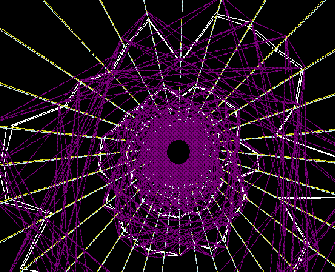 |
Another prototype has also been developed by the University of Illinois - called Virtue.
Virtue [2] exploits human sensory capabilities to help performance analysts explore
large-scale applications. One part of this project is the visualization of communication
between parallel processes, displayed by a Time-tunnel (Figure 1).
In other words, users are surrounded
by tasks, and they can see the processor communication as well as task-computation.
Therefore, analysts can see performance problems within communication, and
where performance enhancements are useful.
A further part of Virtue is the Call-graph display (Figure 2). This data mapping represents procedures,
vertex color and size indicate invocation count and time spend by the procedure. The labels
show the names of the procedure.
The Computer Science Department at University of Wisconsin-Madison developed a tool called Devise [6], which is a generic visualization tool to allow arbitrary number of different but related data-streams to be integrated and explored visually in a flexible manner. In contrast to both other projects, they do not use Virtual Reality to display the information. Streams of data are displayed in line plots, histograms or bar charts.
Our representation is limited to three-dimensionality. We also have a Time-tunnel-like display, as well as a fractal landscape. Detailed information about our approach will be given in the next sessions.